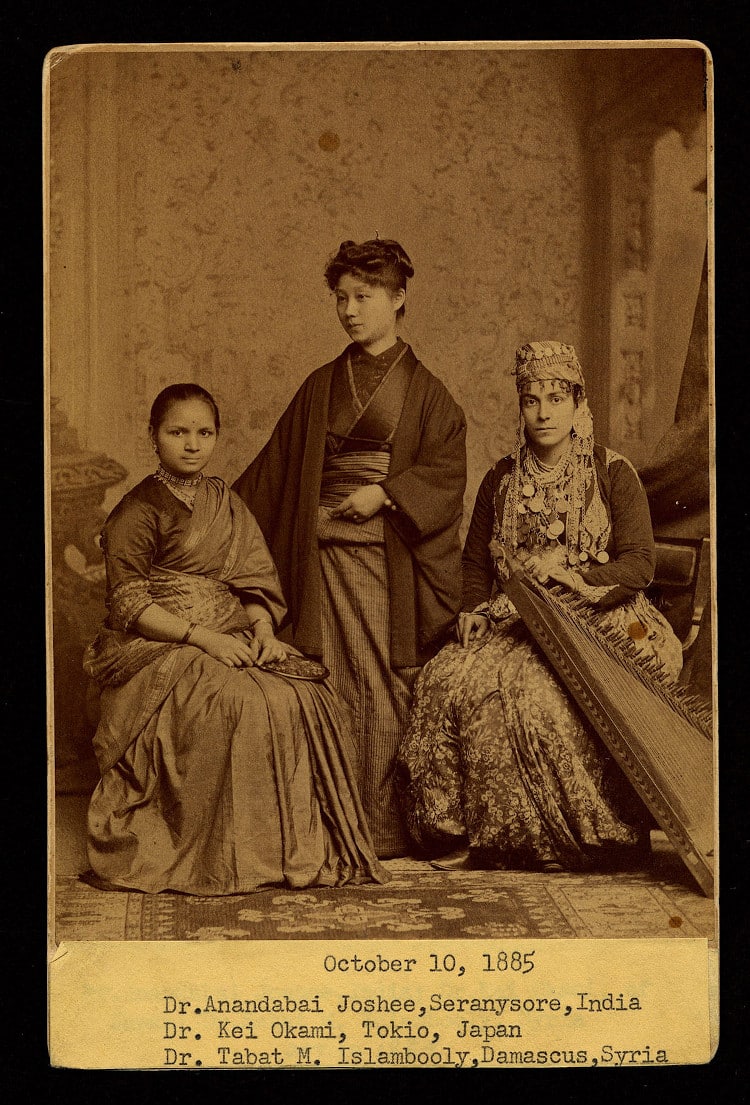
Photo: Legacy Center Archives, Drexel College of Medicine.
According to the Association of American Medical Colleges, about 36.3% of active physicians in the U.S. are women. And while this number is far from ideal parity, it still means that we’ve come a long way—and all thanks to trailblazers who defied social roles and pursued a medical degree in the early days of modern medicine. Drexel University College of Medicine recently uncovered a historical 19th-century picture featuring the first licensed women doctors of India, Japan, and Syria, seated together.
The picture, taken in October 1885, includes Anandibai Joshee, from India, Kei Okami, from Japan, and Sabat Islambooly, from Syria. They were the first women in their respective countries to get a medical degree in Western medicine. Each of them is wearing traditional dresses from their respective countries as they pose for a picture together—an image that almost feels ahead of its time.
They attended Woman’s Medical College of Pennsylvania (WMCP), one of the world’s first medical schools for women, which was founded by Elizabeth Blackwell, who was also the first woman to receive a medical degree in the United States. The school was known for welcoming African-American women when slavery was still legal in America as well as foreign students, something that wasn’t common at the time.
Their individual stories are as fascinating as their shared ones. Joshee, who would graduate in 1886, decided to pursue a medical degree after losing her infant child when she was just 14. When she completed schooling, Queen Victoria herself sent Joshee a letter to congratulate her on the accomplishment. Unfortunately, she didn’t get a chance to practice medicine as she died of tuberculosis at age 22, only a year after graduation.
As for Okami, class of 1889, she went on to work at a Tokyo hospital, eventually becoming the head of gynecology. However, following a fallout with the emperor, who refused to meet with her due to her gender, she went to work as a private practitioner for about 20 years. Later in life, she served as the vice-principal of Shoei Girl’s school, where she established a school of nursing, before retiring due to breast cancer.
While not much is known about Islambooly aside from her graduation date in 1890 the shared goals of these trailblazers speak to a legacy of equality and inclusion; especially given their diverse backgrounds. It’s because of pioneers like them that we see modern women thriving in the field of medicine, and we can dream of a more equitable future.
h/t: [Peta Pixel]
Related Articles:
75-Year-Old Becomes First Woman To Complete 4,800-Mile North Country Trail Twice
Maya Angelou Will Be the First Woman To Appear on the U.S. Quarter in 2022
Man Achieves 3 Amazing Career Milestones as a Navy SEAL, Doctor, and Astronaut
College Professor Offers to Take Care of Doctoral Student’s Kid After She Couldn’t Find a Babysitter
